Air in the brake lines can cause you to lose control of your car, making it essential to bleed air lines. Since most of us cannot afford the ABS scan tool, we’re here to show you how to bleed the ABS module without a scan tool.
Here we will learn the symptoms of air in the brake lines, do step-by-step bleeding of brake line, and what causes air to get in the brake line.
Explanation of the Anti-lock Brake System (ABS)

In older model cars, when you slam the brake to the floor, the brakes lock up, and you lose control of the car. The ABS prevents this from happening. In addition, the ABS allows the car to keep traction on the road.
The Anti-lock Brake System has four main components:
- The ECU (controller) – The ECU runs the ABS. It decides if the brakes need pumping based on the data from the sensors.
- The Pumps – The pumps hold the hydraulic fluid. When applying pressure to the brakes, they press the calipers and brake drums, slowing down the car.
- Speed Sensors – They monitor how fast the wheels rotate.
- Valves – The valves use three positions to release, allow, and stop pressure from building in the brake lines.
Is Your Abs Module Defective?
-
Pushing the brake is harder
When air is in the brake lines, you have to push the brake pedal harder than usual. As a result, it may feel “spongy, ” which gets worse the harder you press the pedal.
Do not ignore this. It needs to be looked at as soon as possible. Driving a car with failing brakes is dangerous!
-
The brakes aren’t working
Over time, the brakes will go from harder to push the pedal to no brakes at all. Do not drive the car like this!
-
The ABS light is on
Your ABS dash light (or the check engine light ) will come on when the system has a problem.
-
Squeaking brakes
As the pressure in the line decreases, it causes a squeaking in the brakes.
How to Bleed ABS Module Without Scan Tool
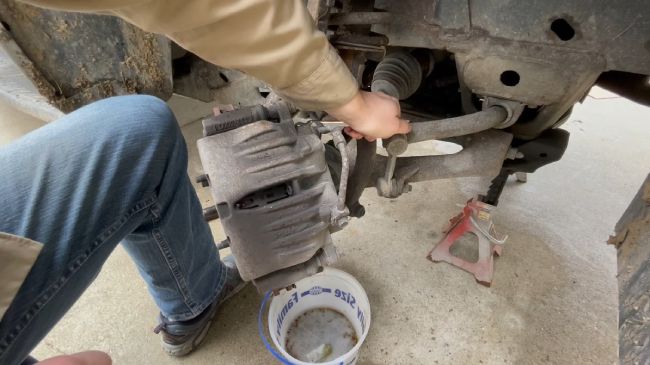
**Photo Courtesy: YouTube
Tools you need
- Brake fluid
- Tubing
- Lug Wrench
- Car Jack
- Car Stands
- Container for old brake fluid
Step 1: Setting up
Assemble all the tools. Park the car engaging the emergency brake in a well-ventilated place with flat ground and good light.
Step 2: Take off the wheels
Jack the car up high enough to remove the tires, placing the jack stands underneath the backend to stabilize the car as you work.
Step 3: Draining brake fluid
Before starting, make sure you have purchased the correct brake fluid for your car. If you are not sure, ask a professional before starting.
Now, with the car hood up, locate the fluid reservoir. It is a small plastic reservoir that you can see into with brake lines (metal tubes) coming off of it going to each tire.
Removing the fluid from the reservoir, put it in an empty container. Refill the reservoir with new brake fluid.
Step 4: Find the brake bleeder screw?
To bleed the ABS module without a scan tool, you will need to bleed the brake caliper’s port. First, loosen the bleeder screw using a wrench, then take off the dust cap and put the tubing end in the container and the other end on the bleeder screw.
Turn the ignition key to the “on” position and press the brake to the floor (the ABS light should come at this time) and hold it there while you open the bleeder screw. Let it pump the brake until all the brake fluid has emptied into the jar.
Repeat this step on all four wheels. Once all four wheels have drained, recheck the reservoir to ensure it is empty.
While emptying the ports, do frequent checks on the master cylinder to ensure it stays at least half full (if it becomes less than half full, you will have to add fluid to the halfway mark). A full master cylinder will keep the air out.
Step 5: Tightening the bleeder screw/refilling the cylinder
Relieve any trapped air, and then retighten the bleeder screw. You may do this several times to each wheel to be sure all the air is out of the line.
Once you bleed all four tires, top off the master cylinder with the new brake fluid.
Step 6: Look for leaks
Walk around the car and look at the floor near the wheels to ensure no brake fluid leaks. Be sure to mop any leaked fluid to prevent falls or pets from licking it.
Step 7: Putting things back together
Once you establish there is no leaking, put all four tires back on and take the car for a test drive. Test the brakes as you drive to be sure they are in good working order.
What Makes Bleeding the ABS System Difficult?
The Anti-lock effect of the brakes is due to the sensor housed between the master cylinder and the calipers. This sensor changes the brake pressure based on wheel slippage. This sensor is what makes the bleeding process difficult.
Manufacturers created a scan tool for the ABS that is quite costly. This scanner is found at service centers and mechanics where you will pay big money for its use.
Why There Is Air in the Brake System
Dot brake fluid draws moisture
Because brake line fluid is hygroscopic, it draws moisture and water into the system.
Brake line and joint damage
If a joint or brake line is damaged, air may get into the system and result in a “spongy” feeling as you brake.
Hydraulic hoses shorten
As the hydraulic hoses get shorter, brake fluid is lost, and the hoses fill with air.
Air in the reservoir
A full reservoir keeps the air out of the brake system. When the fluid in the reservoir gets low, air fills the space and seeps into the brake lines.
Poorly-fitting of linings and brake pads
Air gets into the lines when the brake pads and linings are improperly fit. This is a common problem in newer cars.
Having a brake specialist look over the brakes will ensure everything is good to go.
FAQs
Q. Why would the brakes be soft after bleeding?
Ans: Soft or spongy brakes after bleeding the ABS are commonly caused by the piston in the master cylinder sticking in the bore from the bleeding process.
Q. Can the drive train be affected by the ABS
Ans: A faulty ABS sensor will affect how the ECU (engine control unit) communicates with the drive train. It can affect how the car advances after you have stopped.
Q. Is it necessary to bleed all four brakes?
Ans: While most people bleed all four brakes when they open the brake system, you do not have to bleed all four. If you have an independent brake system, you only have to bleed the one you are repairing.
If you are bleeding a brake line and the reservoir becomes dry, you will have to bleed all the air in the system, which will mean all four tires.
Q. Can the brake fluid go bad?
Ans: Because of its hygroscopic nature, brake fluid can become contaminated with moisture and water. This can weaken the brake fluid, and the moisture can cause corrosion in the system, leading to corrosion in the reservoir.
Check the clarity of the brake fluid when the hood is up. If concerned, you can have it tested when you get an oil change. If problems develop with your brakes, there is a chance the brake fluid is contaminated.
Q. How often do I need to bleed the brakes?
Ans: Your brakes need bleeding at least every two to three years. So if you open the system for any reason, it should be done at that time.


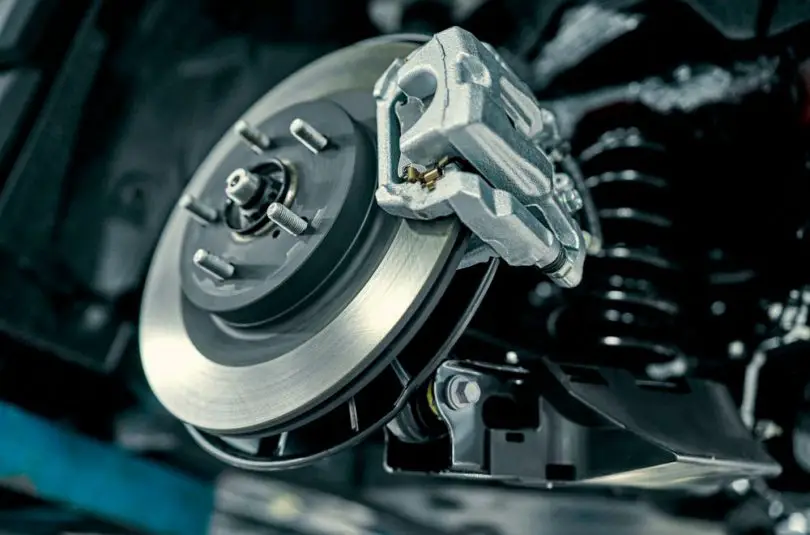
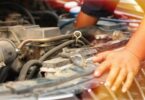
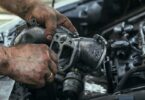
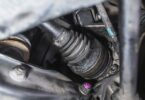
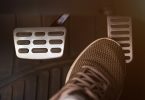
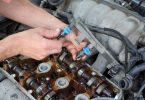


Leave a Comment